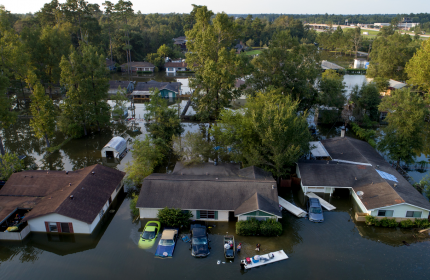Installing high system security or having the fiercest dogs at your home for security purposes does not guarantee protection. You have to be intelligent and do more to make sure your property is protected. The best way to protect your residence is by taking out a home insurance cover. Homeowner’s coverage covers damages and losses to a person’s home as well as the assets in his or her property. In case of disasters, accidents or thefts involving your home, a homeowner’s coverage will protect you during such difficult moments. In short, homeowners insurance provides policyholders with the opportunity to face challenges head-fast without worrying too much about their financial position.
A home insurance cover provides liability and property coverage as well as offering satisfaction to mortgage lenders. It offers a piece of mind during times of crisis. While many people might not see its need, most people consider it a necessary evil. Anyone who has bought a home on loan or mortgage knows that lending institutions insist that beneficiaries should take out a home insurance cover. Banks and other lenders insist on this to protect their interests. They do not want manmade or natural disasters to destroy their investments before mortgage beneficiaries fully pay what they owe. Although it is not advisable, you can drop your home insurance once you are done servicing your loan or mortgage. A home insurance cover is not a yoke on a policyholder’s neck. When you are shopping for a home insurance cover, consider taking out a policy that covers the following:
• Injuries that occur in your property.
• Exterior damage.
• Interior damage.
• Damage or loss of personal belongings/assets.
• Additional living expense coverage.
When a policyholder makes a claim for any of the above incidents, they will be required to pay what is known as a deductible. A deductible is an out of pocket money spent by a policyholder before the insurer pays for any expense. For example, if your roof is blown off by a gust of strong winds during a storm, you will be required to contact your insurer as soon as possible. Your insurer will then send a staff adjuster to make estimates for the damage. Upon the approval of the claim, a policyholder will first pay a deductible before repairs for the roof begin. Every policy agreement has a deductible clause with different terms and conditions.
What is a Tenant’s Insurance Cover?
Also known as a renter’s insurance, a tenant’s insurance policy provides policyholders some of the benefits home insurance owners enjoy. However, it does not cover the structure or dwelling place. It provides personal property and liability insurance. Some of the perils covered under personal insurance include vandalism, theft, and fire. This type of insurance is for individuals who do not own their residence. Such people live in rented properties.
Types of Homeowner’s Insurance
There are different types of home insurance. Before we discuss them, we should first define some terms that should be distinguished from home insurance to avoid any confusion.
i) Mortgage Insurance A mortgage insurance is different from a homeowners insurance in that it protects the lender from losses in case a peril occurs before the borrower; usually a homeowner, pays what he owes the lender. On the other hand, a homeowners insurance protects homeowners.
ii) Home warranty Home warranties are contracts taken out which provide for replacement or repairs of home appliances and systems such as water heaters, pools, dryers/washers, and ovens. Such contracts expire after some time, usually a year. They are not mandatory for one to be issued a mortgage. Homeowners insurance do not cover damages that occur due to wear and tear or poor maintenance. However, home warranties take care of such issues.
The following are the types of homeowners’ insurance covers.
• Personal Property Coverage.
• Family Liability Protection.
• Guest Medical Protection.
• Additional Living Expense Coverage.
a) Personal Property Coverage
This type of insurance covers properties that aren’t attached to one’s home. It protects your belongings such as clothing, electrical appliances such as fridges, and furniture. This type of coverage reimburses policyholders in case of damage such as fire or theft. It is vital for homeowners to know that there are limits when it comes to personal items. When choosing a coverage, ensure that you go for the one that best suits your needs. It is prudent to make an annual appraisal for your valuables just in case you have to make a claim. The best way to know if you have sufficient coverage is by doing an annual inventory at your home.
b) Family Liability Protection
Family liability protection coverage entails taking a home insurance policy that covers those who are at your premises. It helps you prevent making personal payments to cover for medical bills or foot bills for the damage of another person’s property while at your premises.
c) Guest Medical Protection
We all owe a duty of care to our neighbors or to those who we come into contact with. This includes those who come to visit us at our premises. We should be careful when dealing with anyone and should always apply reasonable care so that we do not harm anyone. Unlike family liability protection, guest medical protection is specifically meant for the guests who visit your home. It helps cover or pay for reasonable medical expenses in case someone who is not your family member gets injured in an accident at your home.
d) Additional Living Expense Coverage
This type of coverage is included in all homeowner’s policy. It comes in handy when your home suffers a loss and is no longer habitable. For instance, when there is interior damage that has resulted from a burst pipe which in turn causes flooding to your home, you have to move from your residence because you can no longer live there. When you continue living in your home with such conditions, you put yourself as well as your loved ones at risks. Flooding may cause electrical surges and the growth of mold and mildew which are health hazards. So, when your home is no longer habitable, you have to move temporarily to make room for necessary repairs. This is where the additional living expense coverage comes in handy.
The additional living expenses cover for all your needs, including food costs, during the renovation of your house. It aims at making sure homeowners are not disadvantaged by home losses and that their everyday life activities flow smoothly while house renovations are ongoing. It covers the policyholders’ lifestyle when they have suffered losses. It also helps them maintain a comparable living standard after experiencing a covered loss. Policyholders should not take advantage of their situation and live as kings on vacation simply because they are aware that they will be compensated. Additional living expenses coverage is all about covering the additional costs that you incur when you are displaced from your home.
Usually, the additional living expense coverage is 50% of the limit of your personal property. At 1st Response Public Adjusters, we highly recommend that policyholders keep all receipts for meals, lodging or accommodation as well as other essentials so that they can have an easy time when it comes to making a claim because they will have proof of how much they spent while they were displaced. Most insurance firms provide this money as soon as policyholders notify them of their loss while others reimburse them later. The additional living expenses coverage is meant to help policyholders and their families get better housing options so that they can be in a better position in an already challenging condition.
e) Liability Coverage
Most, if not all homeowner’s policies have liability coverage that is meant to protect assets or property owners against lawsuits and claims. This type of insurance covers you against lawsuits that arise as a result of property damage or injury that you or your family members may cause to other individuals. It also covers the damages caused by your pets. That’s not all; this incredible cover takes care of your legal fees in case you are required to attend court sessions for torts or personal injury cases. Liability limits normally start from $100,000 but it is prudent to consult with 1st Response Public Adjusters to determine if the amount is sufficient to cover your property.
If a policyholder wishes to obtain a coverage that is higher than the normal $100,000, we highly suggest that they take out an excess liability policy that provides a coverage that has higher liability limits. Another advantage of the liability coverage is the “no-fault coverage.” What this means is that if a person sustains serious injuries at your premises, you will not personally pay for their medical bills. Instead, their medical expenses will be taken care of by your insurance firm. However, it is important to note that the “no-fault coverage” does not take care of the medical bills of your pets or immediate family members.
Factors that determine the amount you pay in premiums
Not every person who wishes to take out a home insurance cover will pay the same amount of premiums. The amount payable varies from person to person depending on the different factors. Listed below are some of the factors.
• Your home’s location.
• The age, condition, and construction style of your home.
• Your marital status.
• Whether you have a swimming pool at your home.
• Remodeling.
• Your deductible.
• Your credit score.
Conclusion
Now that you are aware of what a home insurance is and what it entails, you can make an informed decision on which type of home insurance is best suited for your home. If you have any questions regarding home insurance and how to go about it, be free to consult with 1st Response Public Adjusters and we will be happy to be at your service.


